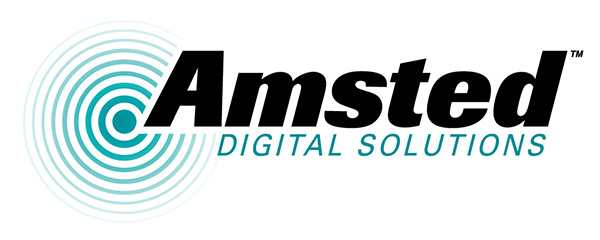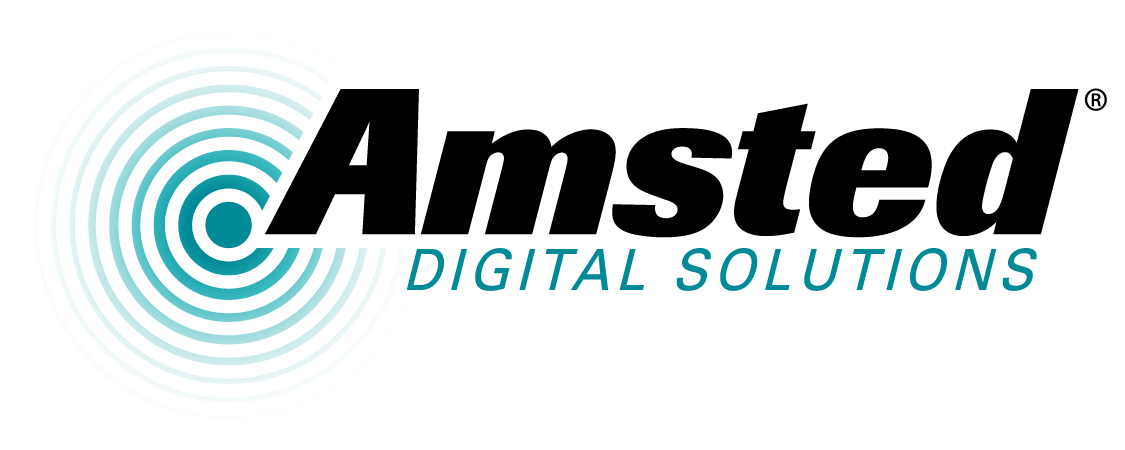By Todd Snyder, PhD – Director, Sensors & Analytics at Amsted Digital Solutions
The safety and efficiency of railway operations depends on monitoring the health status of critical train components. One such component is the roller bearing, which helps support the weight of the train and allows it to roll smoothly along the track. If a bearing fails, it can lead to derailment and attendant damage.
Over time, there has been at least a 95 percent reduction in bearing-related derailments due to improvements in standards and technology. But as long as bearing failures persist, there is a need for further improvements to existing methods for preventing such failures.
Wayside Technology Today
In North America, the rail industry relies heavily on wayside detector systems to monitor the health status of bearings. Wayside detectors are typically integrated into or next to a railroad track. As a train passes by or over a detector, the system monitors for irregularities in the bearings’ health, generally by monitoring heat and sound vibrations.
Hot Box Detectors (HBDs) monitor for bearing defects using an infrared thermal (heat) detection system. When a train passes by or over the HBD, infrared sensors measure the temperature of the bearings (and, in some instances, the wheels as well). If the temperature exceeds a certain threshold, the detector sends an alert to the train crew indicating a potential issue with the train’s bearings. Most railroads also transmit the HBD bearing temperatures to a central location and track each bearing’s individual performance. This is called “temperature trending,” and it allows for detection of problems well before a bearing reaches a final critical temperature threshold.
Acoustic Bearing Detectors (ABDs) monitor for internal bearing defects using acoustic (sound vibration) technology. When a train passes by or over the detector, integrated microphones pick up the sounds of the bearings. The detector analyzes those sounds to detect acoustic abnormalities, such as grinding, screeching, or knocking. If abnormal sounds are detected, the ABD sends an alert to the railroad’s control center, indicating a potential issue with the train’s bearings.
The Limitations of Wayside Detection Systems
Although wayside detectors can be a valuable tool for maintaining railway safety and efficiency, there are some drawbacks to their use:
False Alarms: Wayside detectors can generate false alarms, which can cause unnecessary delays or service interruptions. For example, a detector may indicate a hot bearing on a train, but the bearing may not actually be overheating. Heat is often generated from other kinetic sources—principally when the brakes are applied to the wheels. Avoiding false alarms from wheel braking is the main reason that HBD temperature thresholds are set at higher values than would be used if the bearing’s temperature could be isolated from heat contribution from other sources.
False Negatives: Another potential source of error is identifying the correct bearing that is overheating as the train passes the wayside reader. The technology is good, but when 500 bearings are passing by at 50 miles per hour, it can sometimes specify the wrong bearing.
Limited Coverage: Due to expense, many wayside detectors are installed only in high-traffic areas or locations where there are known issues with trains or components. This means that there are areas where trains are not being monitored, increasing the risk of accidents or undiagnosed failures. Because of the higher risks involved with bearing failures, HBDs are spaced fairly close together along railway tracks; unfortunately, HBDs simply can’t be spaced closely enough to catch all bearing failures regardless of the thermal monitoring method used (i.e., a threshold alert or a trending alert).
ABDs are far more complicated and expensive than the HBDs, so they are even less cost-effective for catching a bearing that deteriorates rapidly. But the ABDs are still an effective wayside tool for predictive maintenance and early removal because sound and vibration patterns are the most reliable method for early detection.
Continuous Onboard Monitoring
Amsted Digital Solutions’ continuous onboard monitoring system meets the challenges presented by wayside detection technology. Decades of freight railway experience propels Amsted Digital Solutions’ research and development in this area, allowing us to pinpoint and solve real-world safety concerns around bearing health monitoring and other performance issues.
When it comes to onboard bearing health monitoring, the Amsted Digital Solutions team has proven through research-and-development and revenue service trials that onboard vibration and sound monitoring is a superior methodology for the following reasons:
- The onboard vibration signature of a bearing cannot be confused with any other source. In contrast, non-problematic heat sources — wheel braking, rubbing seals, sunshine, and even loaded versus empty car variations — make it difficult to accurately identify and assess problematic bearings using temperature readings.
- The timeliness of the onboard vibration signature is also advantageous. Unlike a heat reading that is only available after the train has been in motion for some time, a vibration signature is immediately present when the wheels roll at any speed. It does not take time to develop.
- Temperature measurements are hindered by the mass of the thick bearing adapter pads that insulate and isolate the heat source. Even in the rare cases of an instantaneous cracked roller or broken cage event, the onboard microphone immediately hears the screaming intense white noise, while the temperature sensor lags (and perhaps detects the issue too late).
- Simplicity of a single gateway per railcar truck (or two per railcar), is also of tremendous benefit with regard to adoption cost. Having a non-contact device that can sense vibrations through air in all directions is ultimately more reliable than multiple sensors.
Amsted Digital Solutions’ onboard technology has integrated microphones and a series of accelerometers to listen to the sounds and vibrations produced by the bearings as they rotate. Using sophisticated data analysis, the system can distinguish between normal and abnormal bearing performance.
And, through the use of advanced machine learning techniques, Amsted Digital Solutions is paving the way to move beyond simple condition monitoring toward predictive analytics. As more and more data is gathered by the onboard system and analyzed by Amsted Digital Solutions’ algorithms, the system will learn to recognize trends, patterns and relationships and be able to predict future maintenance needs before a failure occurs. This, in turn, would allow rail fleet operators to take proactive steps to prevent downtime, reduce maintenance costs and improve overall equipment performance, ultimately unlocking a new era of safer, more efficient rail operations.
Amsted Digital Solutions makes the complex manageable
Amsted Digital Solutions has decades of experience tracking and monitoring unpowered freight railcars. Combined with a comprehensive suite of shipment, asset and operations management tools, our proprietary Supply Chain Visibility™ software platform makes fleet management simpler, faster and more effective. Learn more and schedule a demo today at www.amsteddigital.com.
About Todd Snyder, PhD
Todd Snyder, PhD, is the Director of Sensors & Analytics at Amsted Digital Solutions. He joined the company in 2019 after spending over 20 years with Union Pacific Railroad, specializing in failure analysis, wayside detection systems, and IoT solutions. Throughout his career, Snyder has designed, built, installed, developed, managed, and maintained entire IoT hardware and software stacks of stationary (wayside) and mobile (onboard) systems from sensor, through analysis, to UX. Snyder holds a BS in Mechanical Engineering, an MS in Mechanical Engineer/Metallurgy, and a PhD in Chemical and Materials Engineering from the University of Nebraska-Lincoln.


